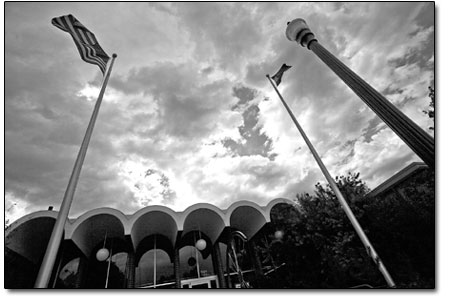| ||||
Troubling times for sales tax
by Missy Votel Although downtown streets, sidewalks and hotels are full, city coffers are telling a different story of the summer tourist season. While it seems high gas prices have not driven away visitors, they have caused people to put the brakes on discretionary spending. According to City Manager Ron LeBlanc, sales tax receipts through the end of June are down from projections, which are the basis for the city’s 2008 budget. “The city budget assumes a 4 percent sales tax increase each year,” said LeBlanc. “Right now, we’re at 3 percent, so we’re a little off.” The paradox of the shortfall is that the lodger’s tax is going strong, registering slightly higher than expected. “Just looking around, there’s a lot of activity downtown, we had a pretty active Fourth,” said LeBlanc. “Durango is a drive-to destination – for people in Denver, Colorado Springs, Phoenix and Albuquerque, this is not a bad drive. But after putting all their money into gas and hotels, they probably aren’t spending as much money on T-shirts and trinkets, and are eating at McDonalds.” And while the downturn is not completely unexpected, it has gained the attention of city officials. Sales tax revenues make up 62 percent of the city’s budget, constituting the biggest revenue stream for the city. The next biggest piece of pie for the city’s budget is property tax, followed by lodger’s tax and trailing off with building fees. “I think what is happening is reflective of national trends,” said Mayor Renee Parsons. “But clearly, it is something we are watching.” She agrees with LeBlanc that numbers point to a belt-tightening among visitors, and locals for that matter. “If people come here on a $1,000 budget and are spending more on gas and hotels, then they’re not going to buy T-shirts and knick knacks.”
But visitors and residents are not the only ones who may be forced to tighten their belts. Parsons said if the trend continues, the city will be forced to re-evaluate its budget as well. “Clearly, it’s something we’re concerned about with the 2009 budget,” she said. The City Council will begin holding study sessions on the ’09 budget in October, and Parsons said any “sacred cows” will be scrutinized closely. “Items that maybe would have slipped through in years past will get a much closer look,” she said. As for the ’08 budget, Parsons said cutbacks could be possible there, as well. “We hope we won’t have to do any cutting, but we may have to re-evaluate after Labor Day if the summer doesn’t go well,” she said. At City Hall, cutbacks are already in effect, said LeBlanc. About 10 years ago, the city instated a tiered policy meant to deal with budget shortfalls. “Right now, we’re in step one of the policy,” he said. LeBlanc just received the most recent sales tax numbers, and once he has had a chance to look them over, he may take more stringent measures. “I’ll probably issue something next week about going to step two,” he said. Step one cutbacks include things such as delaying capital purchase items, reviewing vacant positions and cutting travel and training expenses. Step two cutbacks include delaying capital improvement projects and public works projects, or not hiring for vacant positions. He also added that oil prices have had an effect on the city in ways other than lower sales tax. “Most of what we do with public works depends on oil or oil products,” he said. Currently, the city has $100,000 budgeted for asphalt to patch holes in city streets. However, the cost of asphalt recently ballooned from $58 a ton to $76 a ton, a 32 percent increase. “That means we can patch less, and after this winter, we have about 50 percent more to patch,” he said. In addition to sales tax, the city is also grappling with the loss of building permit fees as well as associated fees such as sewer and street impact fees. So far this year, only 10 residential building permits for a total of 40 units have been issued, down 75 percent over the same time last year. June was the slowest month yet, with the city issuing no residential building permits. “Going back 20 years, no one can remember a month without any building permits,” said LeBlanc. Despite the less than rosy picture, LeBlanc is optimistic that city finances will begin to make an upswing. “We’ll turn around,” he said. noting that historically, July and August are the biggest months for sales tax revenues. “That’s the time of year we see a lot of people come through on summer vacation, traveling with kids. And in September, the kids come back to college, and that’s always big. They spend a lot getting settled in.” Plus, he added that even though current visitors may not be shelling out the bucks, there’s always the chance of repeat business. “If they have fun, they’ll come back,” he said. Parsons agreed with the cautiously optimistic outlook. “Is it just a blip for this year or is it a sign of a bigger pattern? I think it’s still too early to tell.” •
|
In this week's issue...
- January 25, 2024
- Bagging it
State plastic bag ban is in full effect, but enforcement varies
- January 26, 2024
- Paper chase
The Sneer is back – and no we’re not talking about Billy Idol’s comeback tour.
- January 11, 2024
- High and dry
New state climate report projects continued warming, declining streamflows



